Milwaukee 7/8 in. #7 Step Black Oxide Drill Bit
$50.39
Finish all your drilling work easily and quickly by selecting this Milwaukee Black Oxide Drill Bit. Convenient to handle.
In stock
Description
Milwaukee Step Drill Bits with Jam-free Performance are optimized for Cordless Drills in High Speed. Featuring a dual-flute design delivering up to 2X faster whole times, up to 4X longer life and up to 50% more holes per battery charge than the competition. Ideal for drilling large and small-diameter holes in steel and plastic. Black oxide coating also enhances durability, whole quality and bit life.
- Jam-free performance: dual-flute design optimized for cordless drills in high speed provides greater speed and control
- Rapid strike tip: creates fast, accurate starts and generates less heat
- Laser-engraved reference marks: easily stop on any whole size
- 3-flat secure-grip shank: reduces bit slippage in the chuck
Additional information
| Weight | 0.17 lbs |
|---|---|
| Dimensions | 5.88 × 4.88 × 0.88 in |
| Assembled Depth (in.) | 5.88 in |
| Assembled Height (in.) | .88 in |
| Assembled Width (in.) | 4.88 in |
| Bit Diameter | 7/8 in |
| Bit Length (in.) | 3 |
| Bit Material | Black Oxide |
| Drill Bit Type | Step |
| Drill Bit Type(s) Included | Step |
| Individual/Set | Individual |
| Material Application | Aluminum, Duct/Sheet Metal, Steel |
| Model | 48-89-9207 |
| Self-Feeding | No |
| Shank Diameter | 1/4 in |
| Shank Style | 3-Flat |
| Tools Product Type | Power Tool |
Reviews (3)
3 reviews for Milwaukee 7/8 in. #7 Step Black Oxide Drill Bit
Only logged in customers who have purchased this product may leave a review.
Related products
Drill Bits
Milwaukee 18 in. x 7/16 in. QUIK-LOK Universal Extension Bit
Model# 48-28-1050Drill Bits
Model# 48-25-2122Drill Bits
Model# DW2046 GDrill Bits
Model# 48-32-2100Drill Bits
Model# 49-56-0247Drill Bits
Milwaukee Selfeed High-Speed Steel Wood Boring Bit Set (7-Piece)
Model# 49-22-0130Drill Bits
Model# DW2542Drill Bits
Model# DW2735P


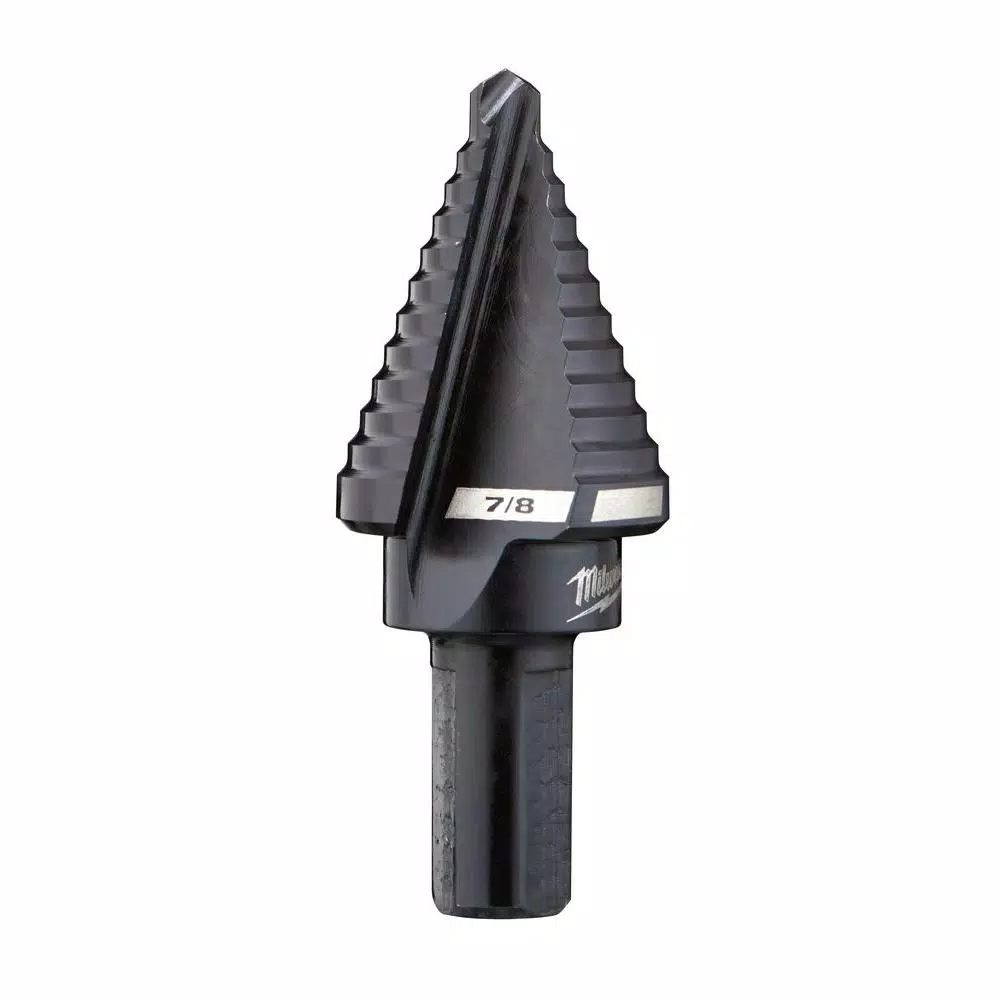
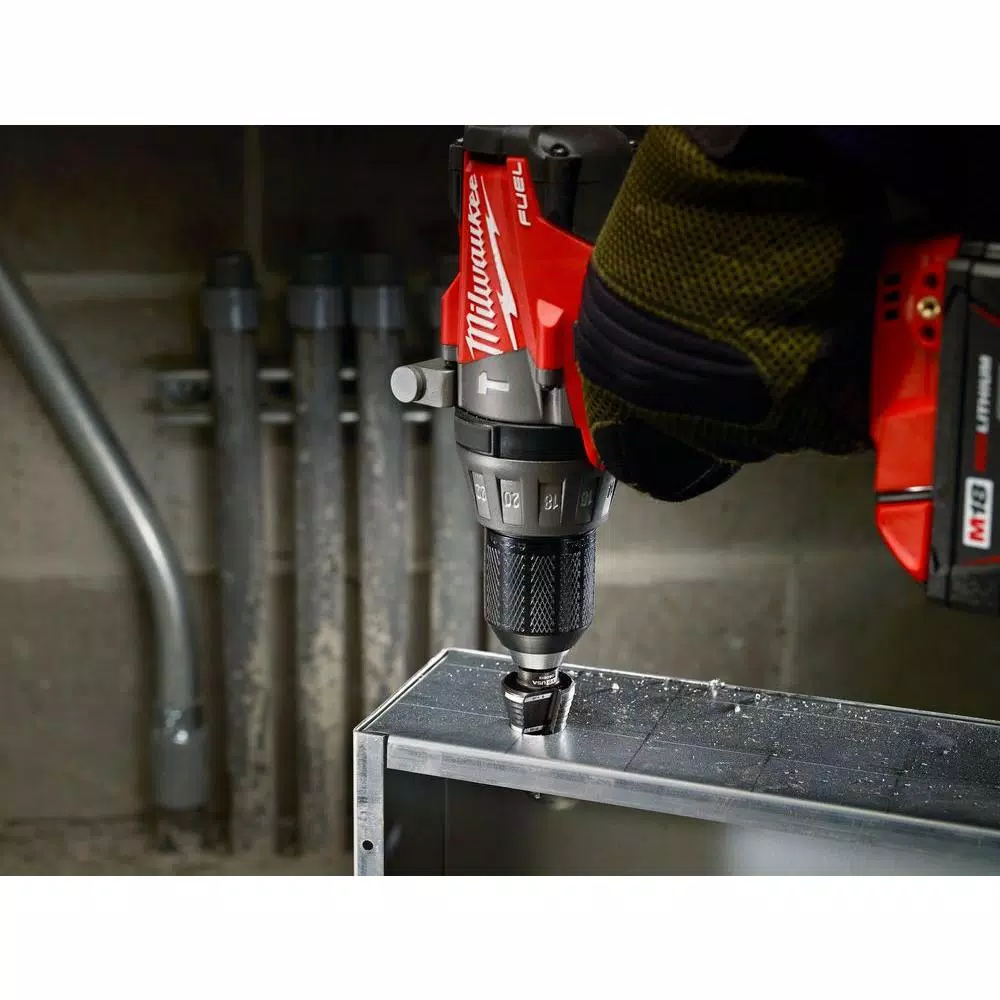
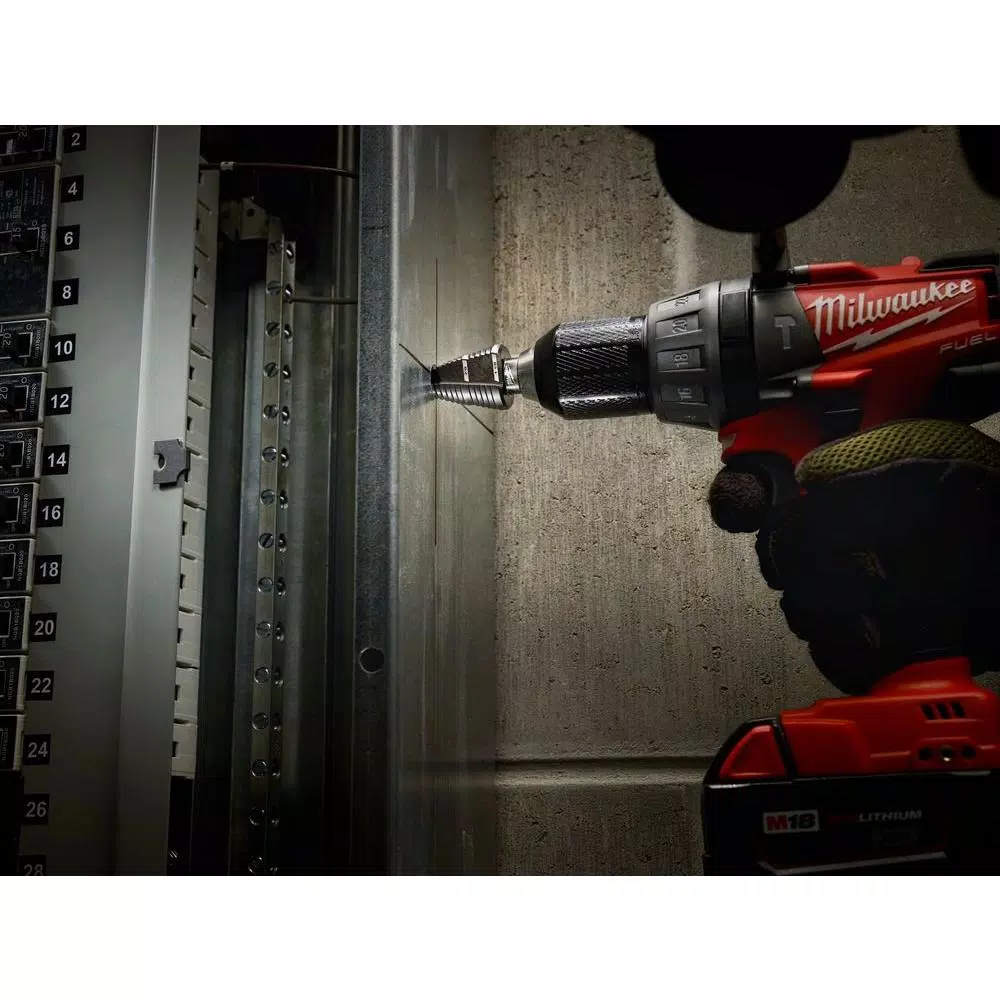
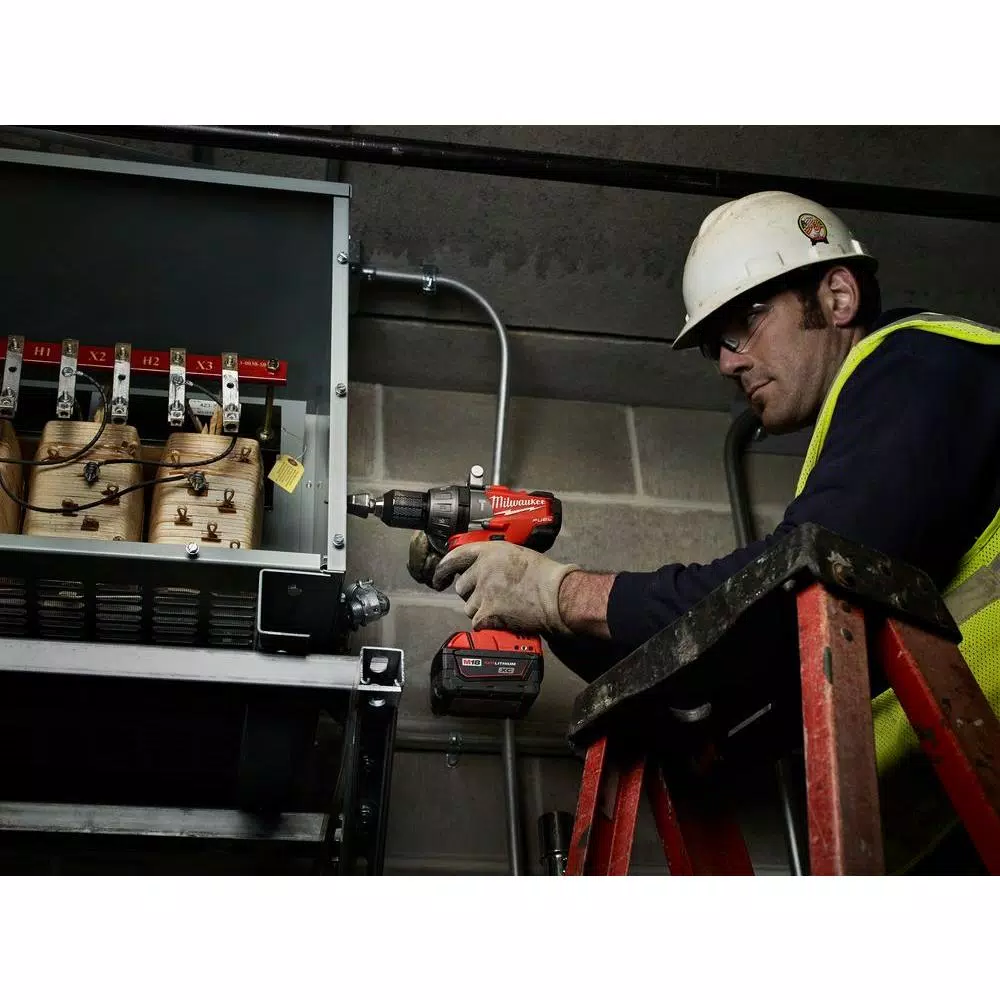
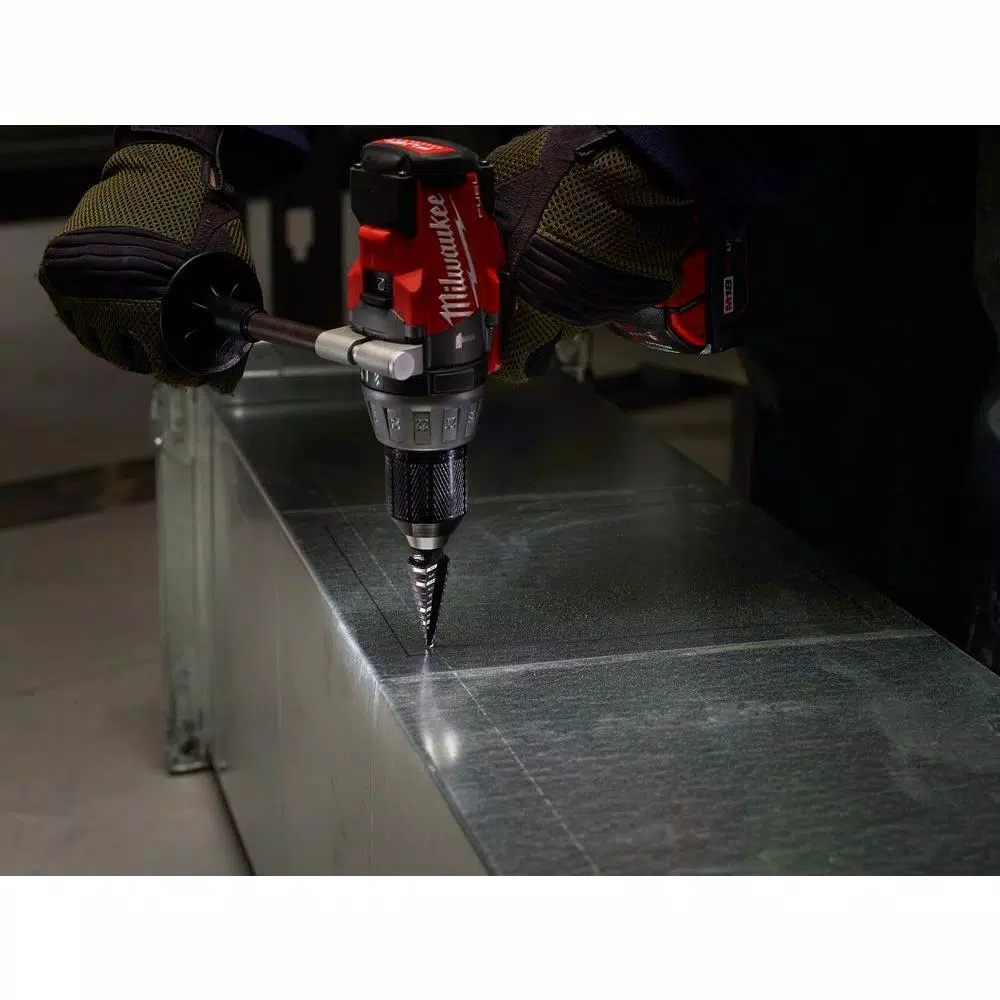

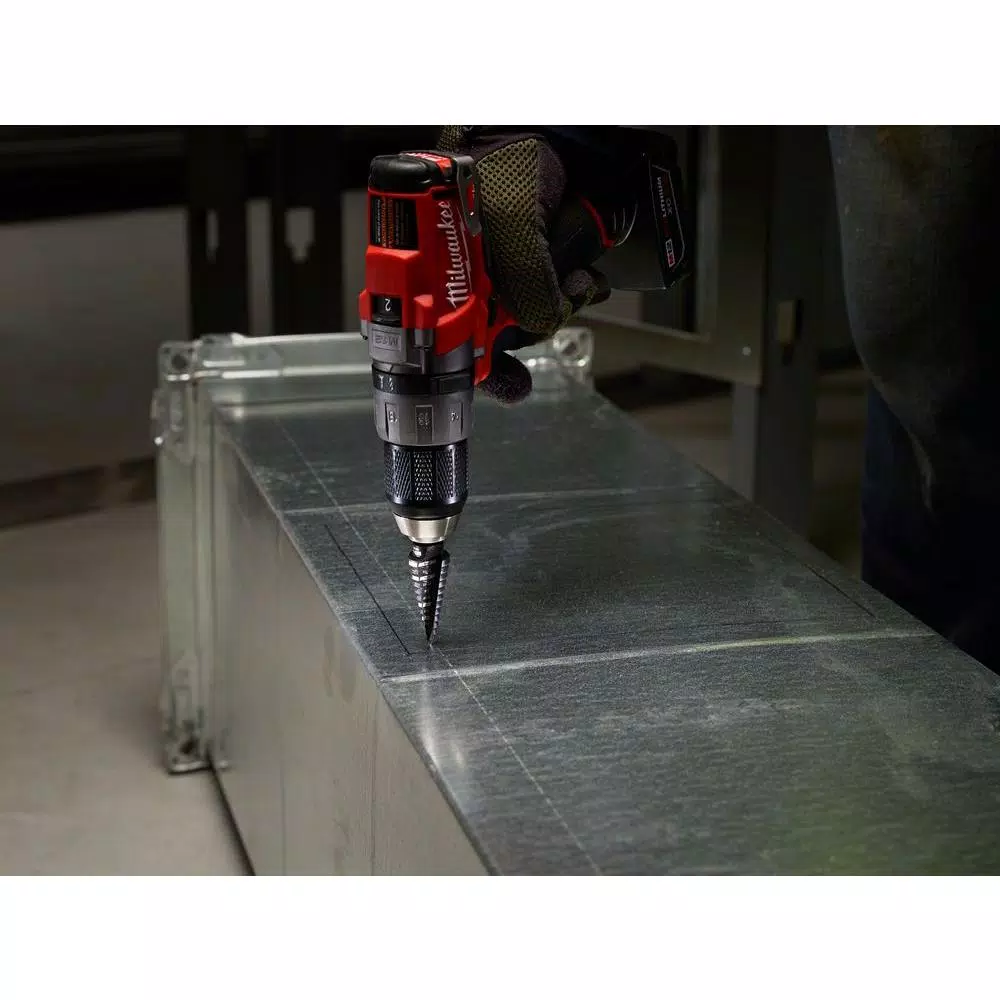























Brigitte Roberts (verified owner) –
Step drills are a necessity in my tool box. This one from Milwaukee is shorter than any of my others, and that makes it more convenient to use in tight places. This bit starts easily with no wandering, and cuts quickly, especially in thin materials. Due to its short length it is better suited for thin materials, as anything over ¼” thick will result in a “stepped” hole, as the next largest segment will be entering the hole at that point. I have used this extensively on a recent electrical job, boring many holes for cable clamps and conduit connectors, and I see virtually no wear or dulling. So far I’m impressed, but I’m not throwing away my longer step drills!
Francesca McLaughlin (verified owner) –
Another outstanding step drill bitBACKGROUND:I have owned a set of step drill bits for several years. Although they are lower quality I was very impressed with their ability to drill. I was excited when I had the opportunity to evaluate the equivalent Milwaukee #7 step drill bit.UNBOXING:This bit continues Milwaukee’s reputation for quality tools. It is significantly heavier than my old bit, and the dual-flute design looks more capable. The diameter markings are nice, but may wear off (time will tell.) Another nice feature is the 3-flat shank that prevents spinning in the drill chuck.USE:It is important to note that this is considered a single hole step drill. Its primary purpose is to drill a 7/8” hole in thin material. Normally drilling a hole this size would require using a small bit to drill a pilot hole, then using progressively larger bits to enlarge that hole. The step feature in this drill bit allows you to drill the hole using only one drill bit. A single hole step bit, like this one is easy to identify, the steps are much closer together than a multi-hole bit, resulting in a more pyramid shape. It is possible to drill different sized holes with this bit, but only in thinner material. Chucking into my cordless drill was simple. Just remember to make sure the collet jaws are engaging on the flats of the shaft. Drilling a 7/8” inch hole in thin metal was easy. I marked a starting point with a center punch, then use the step drill to start and drill the hole. When drilling in sheet metal you must watch the pressure you use to drill the hole as it is possible to “snag” the flutes at the start of each step. I also drilled bolt holes in 1” angle iron. The “Rapid Strike” tip drilled through the angle iron with minimal effort. A nice feature of step drill bits is the ability to chamfer the hole using the next diameter step, a quick and easy way to deburr as well. Chamfering both sides is a simple as flipping the piece over and using the drill bit step again. The chamfers produced were better than using my chamfering bit. The test hole was drilled and chamfered to ¼”. A ¼” bolt fit through the hole quite nicely. I then enlarged and chamfered the hole 1/16th inch to 5/16”. A 5/16” bolt fit through with no problem.SUMMARY:This bit is a welcome addition to my tool box. It will get a lot of use!
Clifton White (verified owner) –
The Milwaukee 7/8 in. #7 Step Drill Bit is a great tool to have. The drill bit sharp and easily drills into sheet metal. It makes drilling holes into ducts or electric boxes a breeze.The steps are not very long, so drilling into thicker walled plastic boxes can be a problem, as you will have one diameter on the inside and already the next step diameter on the outside.A hex shaft would have been even better, as that would prevent the bit from spinning in the chuck if you really go for it.